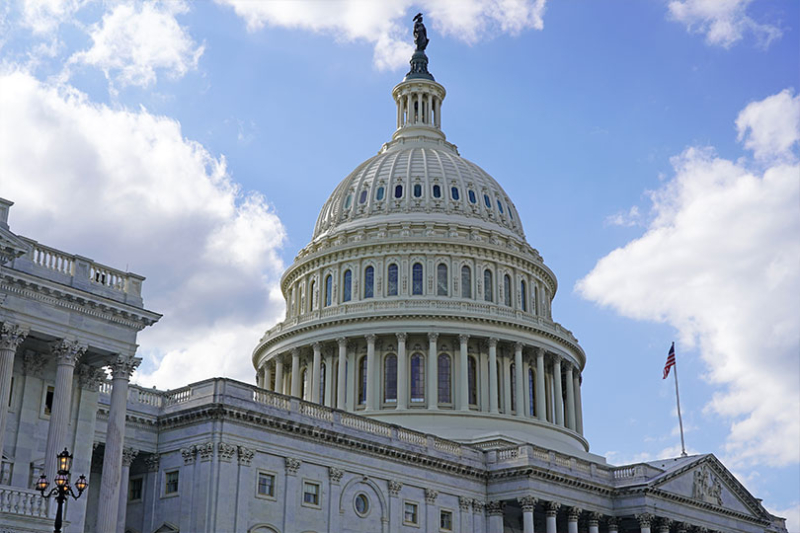By Jessica Domel
Multimedia Reporter
U.S. President Donald Trump is calling on Congress to adopt permanent Daylight Saving Time, ending the twice annual changing of the clocks.
“The House and Senate should push hard for more daylight at the end of the day,” Trump posted on Truth Social. “Very popular and, most importantly, no more changing of the clocks, a big inconvenience and, for our government, a very costly event.”
The president’s call to maintain Daylight Saving Time (DST) came just a few days after the Senate Commerce Committee, chaired by U.S. Sen. Ted Cruz (R-TX), held a hearing—“If I Could Turn Back Time: Should We Lock the Clock?”—on the issue.
Cruz told the committee DST was first implemented to reduce energy consumption by making better use of daylight during the long days of summer.
“This concept might have made sense in the early 20th Century, when our economy and homes relied much more heavily on energy consumption tied to daylight hours,” Cruz said. “Today, the data shows energy savings from DST are de minimis, if not entirely non-existent. Advances in technology, particularly in lighting and climate control, and increased domestic energy production have drastically reduced the relative price of energy compared to the past.”
The chairman pointed to research that the time change is actually harming Americans, rather than helping.
“Changing clocks impacts our health,” Cruz said. “Research has shown that the abrupt shift in time—especially the spring transition when we lose an hour of sleep—disrupt our internal circadian rhythms and can cause sleep deprivation.”
That leads to increased risks of health problems, including higher rates of heart attacks, strokes and even car accidents immediately after the time change.
“In fact, studies have shown that there is a spike in workplace injuries and fatal car crashes during the days after we shift our clocks forward,” Cruz said. “The disruption to sleep patterns and resultant fatigue can have consequences on our productivity, mental health and well-being.”
The time change twice a year is also an inconvenience to families with children who take a while to adjust to the time change.
U.S. Sen. Rick Scott (R-FL) said his legislation, the Sunshine Protection Act, would solve these problems by making DST the national year-round standard.
“The American people are sick and tired of changing the clocks twice a year. It’s confusing, unnecessary and completely outdated,” Scott said. “It’s an understatement to say their nation has changed since the United States began changing the clock over a century ago. For example, American households have electricity now. We also have self-driving cars, computers and cell phones. Now, changing the clocks twice a year proves more of an annoyance to families than a benefit to them.”
Committee members appeared to agree, for the most part, that the time change should be halted, but they couldn’t agree on whether or not the U.S. should move to permanent DST or permanent standard time.
Dr. Karin Johnson, who testified on behalf of the American Academy on Sleep Medicine, said permanent DST would be exponentially worse than seasonal daylight saving time.
“The later sunrises and sunsets of daylight savings time lead to higher risks of chronic diseases, including but not limited to, cancer, diabetes, heart disease, obesity, and these outweigh the short-term risks of what happens with the time change,” Johnson said. “There’s also data that says that permanent standard time also results in better mental health outcomes, including reducing rates of depression and suicide. This is not surprising as morning light and healthy sleep are known treatments for depression.”
After the testimony, several committee members expressed their desire for states to be able to choose whichever time fits their state the best.
Dr. Scott Yates, founder of the Lock of the Clock movement, addressed concerns that it could create a confusing patchwork of time differences in the U.S.
“It’s natural to think that there would be a patchwork if we allowed more states stopped into permanent standard time, but we have a patchwork now,” Yates said. “What we would be creating is less of a patchwork because the lines might change a little bit. Indiana, for instance, may decide that it’s better for the whole state of Indiana to be in central time with Chicago, which is a thousand miles from Boston. It wouldn’t create a patchwork. It would just create a change in where the line is.”
He said the most important thing is eliminating the clock changing, which decreases complexity.
“I suggest Congress establish a firm date, 2027, to permanently end the clock changing. Nationwide, states would then have ample time to decide if they want to remain in daylight’s time or opt out and pick standard time. They wouldn’t have the option to continue the deadly twice yearly switching,” Yates said. “With clear federal guidance, schools evaluate and pick their own bell times, businesses can plan confidently—free from the confusion caused by time changes—and states would even have time to hold elections to let the people decide directly.”


Leave A Comment